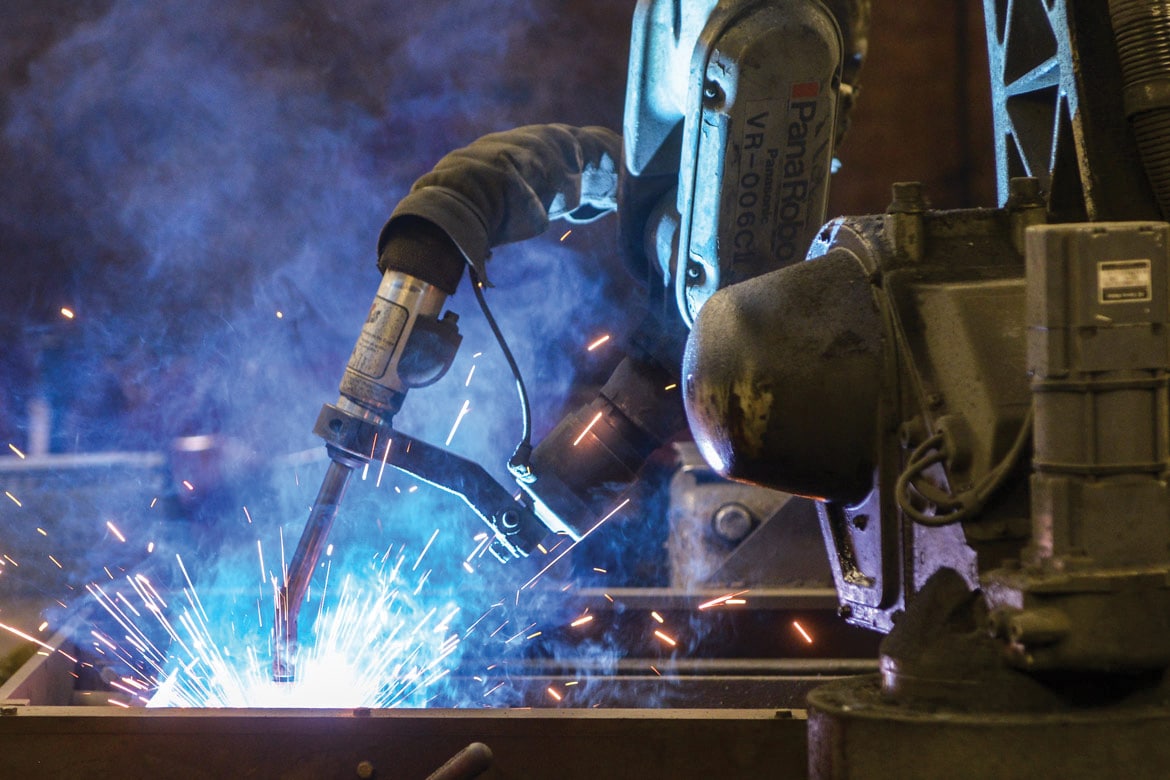
[Photo: Courtesy of Laurel Custom Grating]

Heavy-duty steel grating can be integrated into an extensive range of industrial projects, from airplane hangars to drainage grates. Contractors rely on steel grating products for roadway inlet gratings and other industrial applications. With its high demand in industrial construction, steel grating needs to be made as quickly and efficiently as possible. Laurel Custom Grating (LCG) is at the forefront of automated steel grating manufacturing. The company’s modernized fabrication process ensures their products are of the highest quality—and that they arrive on time. Bill Adams, sales team lead at LCG, recently discussed how LCG combines hand-welding and automated technology to produce versatile, durable steel grating products.
Hand-welded, heavy-duty steel grating offers design versatility and a quick manufacturing process, so the products can make their way to construction sites faster. Our 30,000-square-foot manufacturing facility at LCG features large capacity hydraulic presses with automated feed lines and high-production robotics. By using robotic technology, we maintain our competitive edge in the steel grating market. Our high-capacity hydraulic presses are precise and economical, providing users with reliable, heavy-duty steel grating products at an affordable price.

[Photo: Courtesy of Laurel Custom Grating]
Automation allows us to maximize productivity and efficiency. Our robotic welder can weld commercial steel grates from start to finish. This means less time needed for staging materials—and less people needed for the job. Instead of having to do the fitting process and the welding process in two different areas, the robotic welder puts all of the material into the fixture and then it welds it on the spot.
This hand-welding process is very efficient and allows for customization, too. First off, LCG’s team cuts the steel to size, and then punches in the bearing bars to allow the cross bars to fit in. Then they fit the steel grating to spec and assemble it. The welders complete all of the final touch-ups to ensure the gratings are in compliance with National Association of Architectural Metal Manufacturers’ standards, and the customer’s specific requirements. Our manufacturing facility in Everson, Pennsylvania, also offers convenient access to major interstates, which makes the shipping process even simpler and more energy-efficient.

